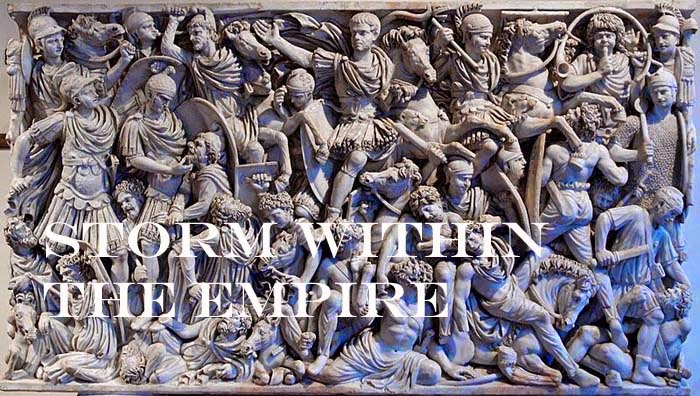The Vandals have appeared in the ‘Migration to
Kingdom’ campaign series which focused on the crossing of the Rhine and ending
with their reaching Hispania. In this match series we will have an opportunity
to add allies, principally the Alani.
Rome are defending an arable region of the empire in the first game. The
compulsory plough has replaced the BUA and a river, one wood and difficult hill
are the additional selections.
Game 1
Rome as the defender placed the infantry facing the
hill as this would be the primary objective for the auxilia palatina. The
legion would support the effort while all the cavalry were positioned as a
reserve.
The Vandals would use the hill to secure their left with their warband while all the cavalry and Alani allies extended the line
toward the river.
The auxilia reach the base of the hill seeing light
opposition they will ascend the height. The Vandal chieftain finding the Alani
less than cooperating (low pip score) moves his cavalry in support of his
warband columns.
Leaving the warband to contest ownership of the hill,
the Vandal cavalry attack the legion.
The Vandal effort is repulsed and the Roman general
and Illyriani add their weight to the conflict in the centre.
After several bounds of locked combat, Roman units
begin to waver and the auxilia are slowly being pushed off the hill. The Vandal
chieftain and other nobles take advantage of the moment to charge the exposed
flanks to secure a decisive victory. Score
4 – 0 for the Vandals.
Game 2
Finding them in similar terrain, Rome made use of the
river to secure their right flank. The cavalry, deployed in two ranks echeloned
back on the left as the open terrain would prove ideal for the Vandal cavalry.
Wheeling the infantry line to the left, Rome advanced toward
the Vandal position. The cavalry reserve moved up in support.
Vandal assaults were less than ideally coordinated,
but the ensuing combat did create casualties for both sides. (1 – 1).
Too late to save half the legion, the Roman reserve
cavalry added their arms to the conflict in the centre. The Alani, seeming
awakened from their lethargy struck a unit of equites in the flank and after a
long struggle the remaining half of the legion fell beneath the swords of the
Vandal infantry. Score 4 – 2 for the
Vandals.
Game 3
For the final battle, Rome extended their entire force
in one long line. The Vandals formed theirs in like fashion with their infantry
on the right and Alani allies on the left.
The Roman centre and left flank engaged the main
Vandal force. The Auxilia forced the warband back as did the Roman cavalry. The
legion feeling the full force of the Vandal chieftain and his guard broke
leaving a gaping hole in the Roman line.
Leaving the Vandal leader to the reprisal of the
remaining legionnaires, the Roman cavalry surged forward to try and destroy the
remaining Vandal cavalry with the Illyriani on their way to seal their fate
from the rear.
Single handed, the Vandal chieftain and guard had
destroyed the entire legion (2 elements), but elsewhere Vandal losses were
mounting quickly (3 elements). Turning his attention to the fighting near the
field, the Vandal leader closed in on the rear on a unit of auxilia and was
rebuffed for his effort.
Likewise, the Alani were able to pick off an isolated
unit of equites bringing the score even (3 – 3).
The decisive blow came when the last Vandal cavalry
were destroyed by the joint effort of the Roman general and the clibanarii. Score 4 – 3 for the LIR.
II/66 Early Vandal 200 – 442 AD Terrain type: Arable, Aggression 3
1 x general (3Kn), 2 x nobles (3Kn), 7 x warriors
(4Wb), 1 x Alans (LH), 1 x dregs (Ps).





















































